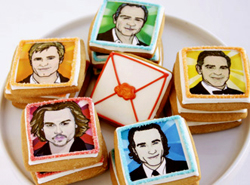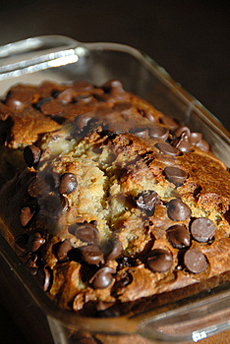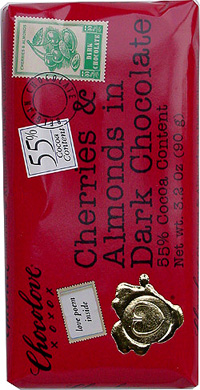|
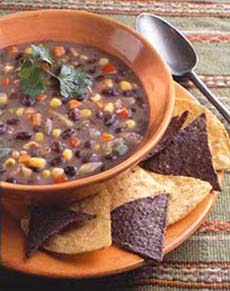
[1] Tortilla chips are made with yellow, white
and blue corn. Riding the whole grain nutrition wave, they’re also made in multigrain blends (photo © Garden of Eatin’).
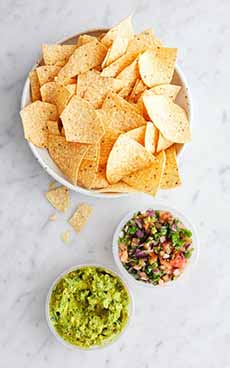
[2] Two favorite dips: guacamole and pico de gallo salsa (photo © Good Eggs).
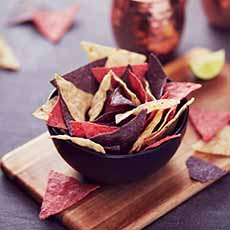
[3] “Liberty chips” blend red, white and blue tortilla chips (photo © Nature’s Path).
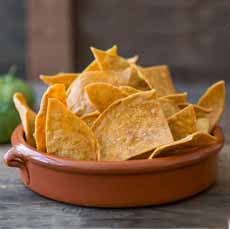
[4] Chips from El Nopalito (photo © El Nopalito Tortilla Factory).
|
|
On the heels (perhaps too close on the heels) of National Corn Chip Day (January 29th), February 24th honors one of America’s favorite snack foods, the tortilla chip.
Check out the difference between corn chips, tortilla chips and taco chips.
THE HISTORY OF TORTILLA CHIPS
Surprisingly, tortilla chips are not a traditional Mexican food. They were first popularized and mass-produced in southwestern Los Angeles in the late 1940s by Rebecca Webb Carranza, who, with her husband, owned a Mexican deli and tortilla factory.
Misshapen tortillas were rejected from the tortilla manufacturing machine, and Ms. Webb turned them into chips—cutting them into triangles, frying them, and selling them in snack-size bags.
Needless to say, they sold well, and became a popular appetizer in Mexican and Tex-Mex restaurants in California. They expanded beyond California in a big way in the late 1970s, with the growth of Mexican and Tex-Mex restaurants, replacing corn chips like Fritos as America’s favorite corn chip snack.
As we mentioned in our post on corn chips, the main difference between the two types of chips is that a tortilla chip is cut from a whole tortilla, and a corn chip is cornmeal processed into a particular shape.
We love them both1
ENJOYING TORTILLA CHIPS
Expand your tortilla chip horizons:
See our favorite gourmet tortilla chips.
Enjoy one of our favorite guacamoles with your chips, Yucatan Guacamole—not only delicious, but organic and kosher.
Find our favorite salsas in the Salsas and Dips section of THE NIBBLE online magazine.
Before they were tortilla chips, they were tortillas. Read about our favorite tortillas, from Tumaro’s.
TORTILLA CHIP RECIPES
Add Crunch To Burgers & Sandwiches
Basic Nachos
Breakfast Salad With Tortilla Chips
Cashew Salsa With Tortilla Chips
Ceviche With Nachos
Cheddar Cheese Fondue With Tortilla Chips
Chicken Corn Tortilla Soup
Cinco De Mayo Party
Crunchy Fried Or Baked Tortilla Strips
Deconstructed Enchilada Salad
Fully Loaded Nachos
Greek Nachos
Grilled Chicken Or Fish With Pico De Gallo & Tortilla Chips
Guacamole & Tortilla Chips
International Nacho Recipes
Mexican Meatloaf
Mexican Parfait
Nacho Cheese Ball
Olive Salsa & Tortilla Chips
Salsa Gazpacho With Tortilla Chips
Strawberry Salsa With Tortilla Chips
Sweet Chips & Dips
Tomato Mango Chutney & Tortilla Chips
Tortilla Soup recipe
Tortilla Chips & Steak Appetizer
Tortilla Chip S’mores
Uses For Broken Chips
|





